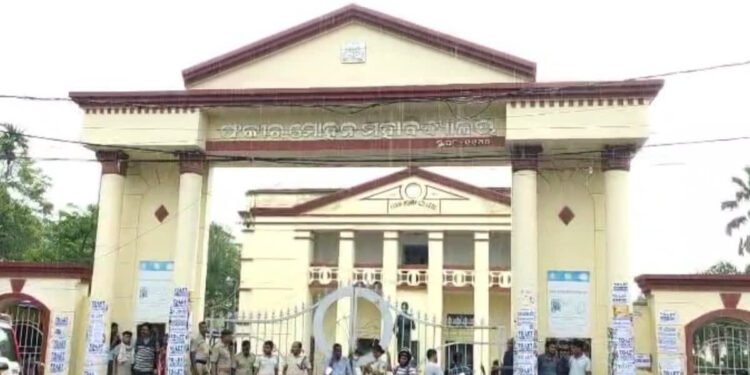Bhubaneswar- Balasore is gripped by grief and questions as the investigation into the mysterious death of a girl student at Fakir Mohan Autonomous College gains urgency and depth. With suspicions of foul play looming large, three powerful investigative bodies—the Odisha Crime Branch, a fact-finding team from the University Grants Commission (UGC), and a high-level committee of the State Higher Education Department—have launched an intensive on-ground inquiry into the tragic episode that has sparked statewide outrage and concern.
Teams from all three agencies are leaving no stone unturned. From meeting college officials and students to closely examining the deceased student’s background and college environment, the investigation is expanding on all fronts. The Crime Branch, which is leading the criminal investigation, has also questioned family members and those associated with the Internal Complaints Committee of the institution. The role and past conduct of a faculty member, Samir Sahoo, are under scrutiny, as murmurs around his alleged misbehaviour with students gather strength during interactions with the probe teams.
Simultaneously, the fact-finding team from UGC arrived from Delhi to take stock of the college’s internal mechanisms, safety protocols, and administrative response to the incident. Their visit, which spanned several hours, included detailed interactions and document reviews, followed by field assessment in and around the college premises. Officials from the State Higher Education Department were also present, signaling the seriousness with which the state is handling the case. Investigations will continue further, and authorities remain tight-lipped about many details as the inquiry progresses.
However, the most startling development came during the Crime Branch’s visit to a petrol pump near the college. Acting on a lead, investigators obtained CCTV footage that reportedly shows a young woman buying one litre of petrol in a plastic bottle on July 12—the same day the student sustained fatal burn injuries. The pump attendant has confirmed the sale, and the footage has become a critical piece of evidence now under close analysis.
The identity of the woman in the footage, her connection to the deceased, and the motive behind her purchasing fuel are currently being probed. Investigators suspect that this act could be directly linked to the tragic sequence of events, raising questions about whether the student acted alone, was coerced, or was a victim of a larger, concealed plan. If verified, this lead could redefine the narrative of the case and expose layers of truth that have so far remained hidden.
As pressure builds on authorities to deliver justice, the FM College case stands as a disturbing reminder of the vulnerabilities that persist in educational spaces meant to be safe havens. With multiple agencies now pursuing the case from different angles, the truth, it seems, may soon be within reach.






